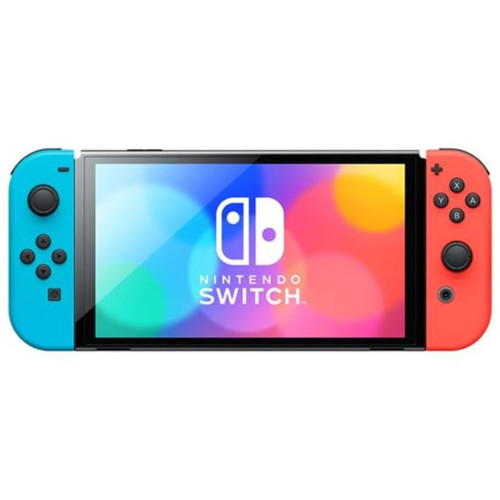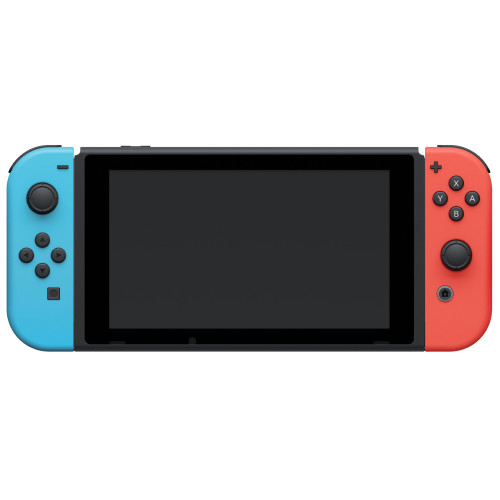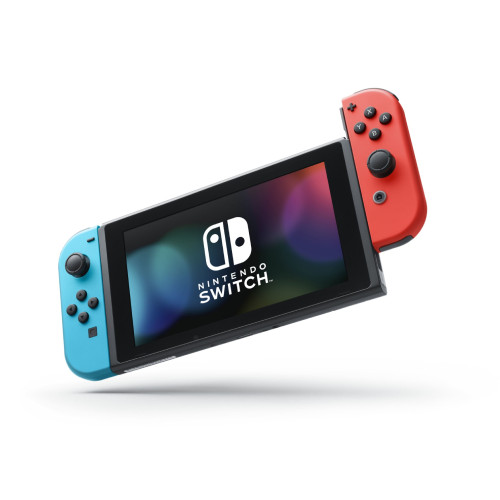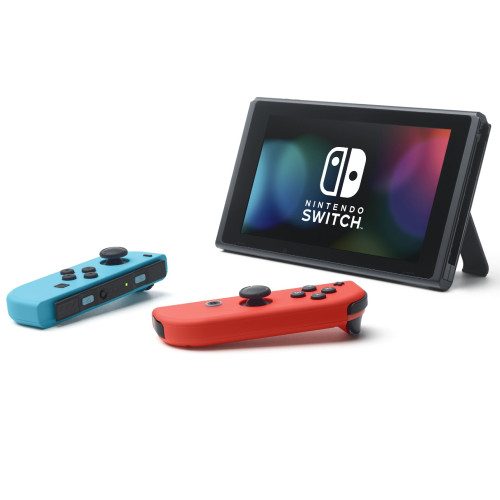POSTED: 28 January, 2025
Nintendo Switch vs. Nintendo Switch 2: Why You Should Upgrade
Nintendo Switch consoles go head-to-head to determine which handheld is worth your consideration.
With the full reveal now behind us, including design details and performance specs, we can finally compare the Nintendo Switch and Switch 2 side-by-side. For a deeper dive into confirmed games, hardware and features, check out our latest blog on Nintendo Switch 2 games.
Although the brand-new device seems worth upgrading, not everyone will jump at the chance to grab it from day one, particularly given its steep price tag. The two devices appear pretty alike, so we're here to break down what's different in this latest generation.
Nintendo Switch vs. Nintendo Switch 2: Specs
The Nintendo Switch 2 brings substantial upgrades over the original model, with key improvements in performance, display quality, storage capacity, and future-ready features like AI-powered upscaling. These specifications have now been confirmed following Nintendo’s April reveal. If you’re wondering what these upgrades mean in real terms—especially for game sizes and performance—you can explore our full breakdown in From Nintendo Switch to Switch 2: Which Games Are Making the Jump?
| Features | Nintendo Switch | Nintendo Switch 2 (Confirmed) |
| CPU | Nvidia Tegra X1 | Custom Nvidia Processor |
| GPU | Nvidia Maxwell-based | Nvidia GPU with RT Cores & Tensor Cores (DLSS + Ray Tracing) |
| RAM | 4GB LPDDR4 | Estimated 12GB LPDDR5 (unconfirmed) |
| Storage | 32GB internal, expandable via microSDXC | 256GB internal, expandable via microSD Express (no SDXC support) |
| Display | 6.2-inch LCD, 720p (handheld), 1080p (docked) | 7-inch OLED, 1080p handheld, up to 4K docked |
| Video Output | Up to 1080p via HDMI (docked) | Up to 4K via HDMI (DLSS-powered) |
| Battery Life | 2.5 - 6.5 hours | Expected improvement (TBC) |
| Other Features | Detachable Joy-Con controllers, IR Motion Camera | Magnetic Joy-Con attachment, redesigned stand, backwards compatibility |
Want to see how all this affects real-world gaming? From Cyberpunk 2077 to Mario Kart World, we’ve covered it all in our in-depth blog: From Nintendo Switch to Switch 2: Which Games Are Making the Jump?
Nintendo Switch vs. Nintendo Switch 2: Design
The most notable difference between the Nintendo Switch and Nintendo Switch 2 is that the predecessor is larger. The Nintendo Switch 2 reveal video shows that the next console packs a larger main unit with a larger display size and thinner bezels.
We have not yet been updated with the final dimensions, but internet sleuths reckon the Switch 2's screen is about 7.5 inches. The original Switch, equipped with Joy-Cons that attach to the side rails, measures slightly over 9.4 inches in width, 4 inches in height, and just over half an inch in thickness. It weighs approximately 10.5 ounces (297 g). The Joy-Cons secure themselves by sliding down the top edges of the device's sides, and a slim plastic kickstand folds out from the back for support.
On the other hand, the new Nintendo Switch 2 has more dimensions while retaining the same overall design and layout as the original model. According to speculations, instead of sliding onto rails, the updated Joy-Cons will attach magnetically and connect to the console through pins. The larger Joy-Cons now accommodate two additional shoulder buttons, making four total. Additionally, the new console has redesigned the stand again. Instead of a full plastic base, the Switch 2 uses hollowed out ring for its tabletop mode. The trailer showcased this stand reclining significantly further than the original console's stand or the Switch OLED's stand, offering greater versatility when the Joy-Con controllers are detached.
Nintendo Switch vs. Nintendo Switch 2: Display
The exact specifications of the Nintendo Switch 2 are unknown, but the display is larger than that of the original Switch and the compact Nintendo Switch Lite. The trailer video revealed a significant expansion of the screen, though subsequent gameplay images confirmed the return of those larger side bezels. This is a bit underwhelming, especially compared to the sleeker design of the newer OLED model.
Looking at the older Switch, there is a 6.2-inch LCD screen with a 1,280x720-pixel resolution, which was reasonably impressive but has outclassed by newer handhelds with sharper displays. The Nintendo Switch OLED upgraded this with a slightly larger 7-inch display, featuring deeper blacks and colours, but the resolution has not been enhanced.
In contrast, Nintendo Switch 2 has a larger screen with a larger display and an anticipated 8-inch LCD screen size, quashing hopes that Nintendo will include pricier but better-looking OLED screens in its next console. Again, we'll have to wait for the complete Direct presentation on April 2 for more details on the display thing.
Nintendo Switch vs. Nintendo Switch 2: Controllers
A key difference between the Nintendo Switch 2 and the original Nintendo Switch is the Joy-Con controllers. At first glance, the differences might seem minor, but the Switch 2 introduces significant upgrades in this area.
The Joy-Cons for the Switch 2 are bigger, offering improved comfort for players with bigger hands. However, the changes don't stop there.
Switch 2 has Joy-Cons attached to the main console unit using a new snapping mechanism, speculated to be magnetic, rather than the less durable railing connectors used in the original Switch. Another notable update is the addition of a mysterious button on the right Joy-Con. While early renders displayed a button labelled with a "C," the reveal video depicts it as blank, hinting that Nintendo is keeping its functionality a secret.
Nintendo Switch vs. Nintendo Switch 2: CPU/GPU
The CPU powers the console, running games and other system processes. The original Nintendo Switch uses an NVIDIA Tegra X1 chip divided into four ARM Cortex A57 CPU cores. This chip is good for portable gaming and is powerful enough to handle popular titles like The Legend of Zelda: Breath of the Wild and Mario Kart 8 Deluxe. However, it was first introduced in 2017, making it quite old by today's standards. This means it struggles with more demanding modern games, especially ones that need much power to deliver smooth graphics and quick performance.
The Switch 2 uses a custom Nvidia chip confirmed to support DLSS upscaling and real-time ray tracing, offering sharper resolution without large file sizes.
In simple terms, the Switch 2's CPU will be far ahead of the original Switch's, making it a better choice for gamers who want more power. However, the full details about the Switch 2's CPU performance will only become clear once Nintendo officially reveals more about the console.
Nintendo Switch vs. Nintendo Switch 2: RAM & Storage
The original Nintendo Switch has 4GB of LPDDR4 RAM and 32GB of storage. A microSD card slot located under the kickstand allows you to expand the storage up to 2TB.
For the Switch 2, Nintendo hasn't shared official details about its specs yet. However, a few leaks suggests the Switch 2 might have 12GB of faster LPDDR5 RAM and 256GB of storage. The leak also hints at the console having two internal fans instead of the single fan in the original model.
Nintendo Switch vs. Nintendo Switch 2: Battery Life
The original Nintendo Switch features a 4,310 mAh battery, which means it can play for between 4.5 and 9 hours. The exact battery life depends on screen brightness and how the console is used.
Nintendo hasn't shared official details about the Switch 2's battery yet, and leaks on this topic are minimal. However, some believe the new console, possibly larger, might include a bigger battery. Rumours also suggest it could be more energy efficient.
Nintendo Switch vs. Nintendo Switch 2: Backwards Compatibility
Nintendo fans can sigh relief—backwards compatibility with existing Switch titles is heavily speculated. This ensures that the extensive library of games already available for the original Switch will seamlessly transition to the new console. If you are a player who is deeply invested in the ecosystem, this feature is a game-changer, offering consistency without the need to rebuild your collection.
Need a Handheld Device That Delivers Big Results?
If you want excellent performance in a handheld, you will wait to buy the Nintendo Switch 2. However, there are plenty of things about Switch 2 that we don't know yet, including how much faster it might be versus the Switch, what type of features and display it will have, and whether it will have a faster processing chip. While a Nintendo patent suggests it'll be a high-performance gaming console due in part to its use of AI capabilities to boost the resolution of games, its specs will likely make sense when set against its price.
Buying for Someone Who Values Simplicity Over Specs?
For casual gamers or those content with the original Switch's capabilities, sticking with the older model may suffice for now. The graphics, speed, and comfort improvements could make the Switch 2 a must-have for dedicated gamers and early adopters.
When Switch debuted in 2017, its graphical capabilities already seemed dated. However, many of its standout games, like Splatoon 3, The Legend of Zelda: Tears of the Kingdom, and others, feature exceptional art that compensates for its limited power. For playing Switch titles, the Nintendo Switch OLED is the top choice. While it shares most components with other models, it features a larger OLED display, enhancing contrast, brightness, and overall picture quality.
Conclusion
The Nintendo Switch 2 is a significant upgrade in terms of design, performance, and features compared to its predecessor. With a larger display, enhanced Joy-Con controllers, and anticipated processing power and storage improvements, the Switch 2 delivers a more immersive and versatile gaming experience. Backwards compatibility with existing Switch titles also ensures a seamless transition for dedicated platform fans.
However, the decision to upgrade depends on your personal preferences as a gamer. The original Nintendo Switch remains a solid option if you value simplicity, portability, and affordability.
With the Switch 2’s specs now officially revealed, we’ve explored confirmed games, storage demands, and more in our latest article: Which Games Are Making the Jump?
The choice between the two consoles boils down to your gaming needs and budget. Whether you stick with the classic or embrace the new, Nintendo's handheld gaming platform continues to provide exceptional entertainment.



